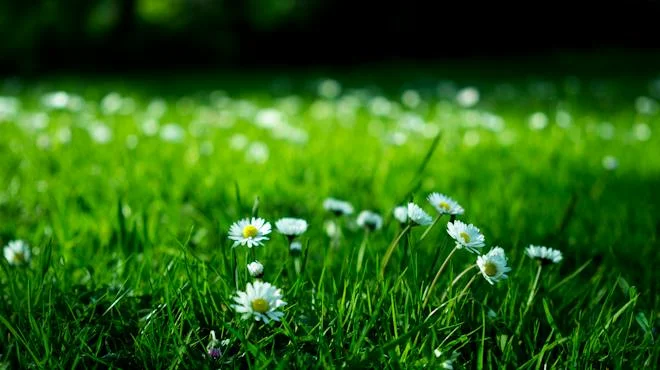
Welcome to an exploration of one of Robert Frost’s most thought-provoking poems, “Nothing Gold Can Stay.”
This timeless piece of literature encapsulates the fleeting nature of beauty, using vivid imagery and conveying a profound message to readers across generations.
Nothing Gold Can Stay "Nature’s first green is gold, Her hardest hue to hold. Her early leaf’s a flower; But only so an hour. Then leaf subsides to leaf. So Eden sank to grief, So dawn goes down to day. Nothing gold can stay." Robert Frost 1874 –1963
Subject of the Poem
“Nothing Gold Can Stay” delves into the transient nature of beauty and the inevitability of change. Through nature’s cycle, Frost invites readers to contemplate the impermanence of precious moments and the fleetingness of youth and innocence.
The poem’s title itself hints at the underlying theme—nothing, no matter how splendid, can endure indefinitely.

About the Author
Robert Frost, a celebrated American poet, was renowned for his ability to capture the essence of human experiences through poetry. Born in San Francisco in 1874, Frost’s literary career flourished during the 20th century, earning him four Pulitzer Prizes for Poetry.
His works often revolved around rural life, nature, and profound observations about existence, making him a beloved and revered figure in American literature.
Context of the Poem
“Nothing Gold Can Stay” was published in 1923 as part of Frost’s collection titled “New Hampshire.” This poem is a mere eight lines long, yet it encapsulates a depth of meaning that continues to resonate with readers today. It reflects Frost’s ability to use nature as a metaphor to convey profound insights into the human condition.
Themes and Recurring Ideas
The poem’s overarching theme revolves around the inevitability of change and the transient nature of perfection. It touches upon the cyclical nature of life, emphasizing that every beautiful beginning ultimately leads to an end.
This concept resonates universally, implying the sentiment that all that glimmers in its prime eventually fades away.
Structure of the poem
Frost’s craftsmanship shines through the poem’s structure, comprising eight lines in total, each adorned with a delicate rhythm and rhyme scheme. The poem employs the ABAB CDCD rhyme scheme, utilizing precise language and vivid imagery to evoke a profound emotional response from the reader.
The preciseness of the verses serves as a metaphor for the fleetingness of cherished moments.

Line by Line Analysis of “Nothing Gold Can Stay” by Robert Frost
Line 1: “Nature’s first green is gold”
The poem opens with a vivid metaphor, comparing the initial emergence of nature’s greenery to the preciousness and brilliance of gold. Here, “gold” symbolizes not only the color but also purity, beauty, and value.
The choice of metaphor establishes the central theme of the poem, highlighting the beautiful moments in life. The first line sets the tone for the entire poem, emphasizing the transient nature of beauty and the passage of time.
Line 2: “Her hardest hue to hold”
This line extends the metaphorical comparison between nature’s green and gold, suggesting that this initial, beautiful state is fleeting and challenging to maintain. The personification of nature as “Her” dresses it with human-like qualities, enhancing the emotional impact.
The structure remains consistent with the previous line, using an iambic trimete, building the reader’s curiosity towards what comes next.
Line 3: “Her early leaf’s a flower”
Here, Frost employs yet another metaphor, comparing the early, fresh leaves of spring to flowers, underscoring the fleeting transition from leaf to full bloom. The concise and structured form of the poem reflects the transformation of Nature.
The use of enjambment in this line creates a seamless flow between thoughts, emphasizing the continuous cycle of growth and change in nature.
Line 4: “But only so an hour”
This line, starting with a “but” introduces the conflict of interest for the first time. The poet uses irony to emphasize the short-lasting perfection, despite the much-appreciated “gold-like” nature described earlier.
The juxtaposition of the beauty of the early leaf turning into a flower, followed by the swift passing of that moment within “an hour,” infer the poem’s theme of impermanence.
Line 5: “Then leaf subsides to leaf”
In this line, Frost uses alliteration (“leaf subsides”) to emphasize the cyclic nature of life and how it is inevitable. The structure, with its lack of punctuation and concise phrasing, mirrors the continuous flow of time and the natural progression from one stage to another.

Line 6: “So Eden sank to grief”
This line employs an allusion to the biblical story of the Garden of Eden, using it as a metaphor for the loss of innocence and pristine beauty. The use of the proper noun “Eden” lends weight to the concept of paradise lost, while the word “grief” conveys a sense of sorrow and lamentation.
Line 7: “So dawn goes down to day”
Here, Frost continues to illustrate the inevitable progression of time and the transient nature of beauty. The use of metaphorical language comparing the dawn to the full light of day, implying transition from one state to another as time goes by.
The absence of punctuation and the concise phrasing create a sense of continuous movement, emphasizing the passage of time.
Line 8: “Nothing gold can stay”
The final line serves as the poem’s refrain, repeating and encapsulating its central message. The aphoristic nature of this line emphasizes the universality of the theme – that all things beautiful and pure are transient and bound to fade away.
The choice of monosyllabic words enhances the poem’s impact, leaving a lasting impression on the reader, with a feeling of acceptance.
Conclusion
“Nothing Gold Can Stay” by Robert Frost talks about how things that seem beautiful and perfect don’t last forever. It makes you feel a little sad but also makes you think about how life changes.
The poem shows that the author, Frost, wants everyone to understand that nothing perfect can stay that way forever. It’s not about one person’s view but about how life works for everyone. It makes you feel thoughtful about how things in life are temporary, even the most beautiful ones.
RELATED POSTS
View all



